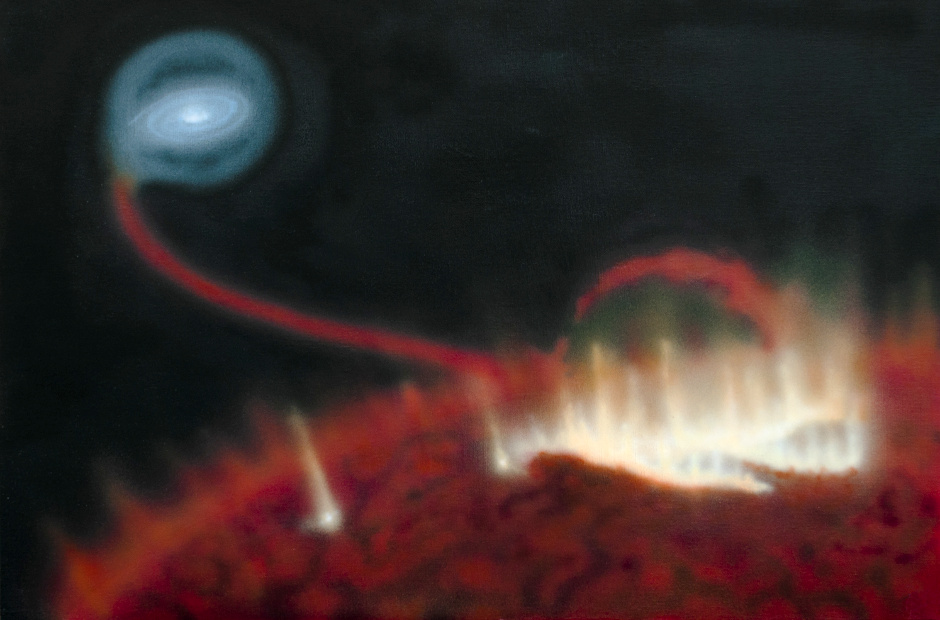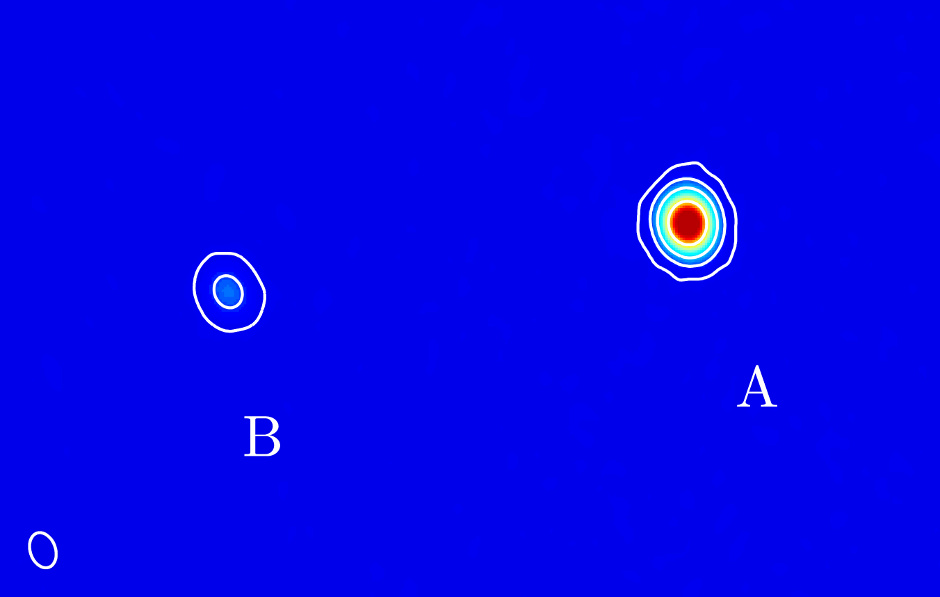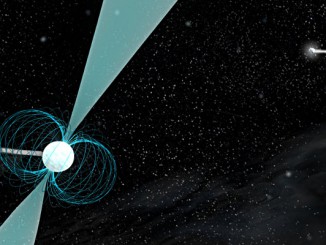
“ALMA’s vision is so sharp that we can begin to see details on the surface of the star. Part of the stellar surface is not just extremely bright, it also varies in brightness. This must be a giant flare, and we think it’s related to a flare which X-ray telescopes observed some years ago,” says Wouter Vlemmings, astronomer at Chalmers, who led the team.
The team’s results were published in the journal Astronomy & Astrophysics on May 13th, 2015.
Red giants like Mira A are crucial components of our galaxy’s ecosystem. As they near the end of their lives, they lose their outer layers in the form of uneven, smoky winds. These winds carry heavy elements that the stars have manufactured out into space where they can form new stars and planets. Most of the carbon, oxygen, and nitrogen in our bodies was formed in stars and redistributed by their winds.

“Mira is a key system for understanding how stars like our Sun reach the end of their lives, and what difference it makes for an elderly star to have a close companion,” Sofia Ramstedt, astronomer at Uppsala University and co-author on the paper.
The Sun, our closest star, shows activity powered by magnetic fields, and this activity, sometimes in the form of solar storms, drives the particles that make up the solar wind which in its turn can create aurorae on Earth.
“Seeing a flare on Mira A suggests that magnetic fields also have a role to play for red giants’ winds,” says Wouter Vlemmings.
The new images give astronomers their sharpest ever view of Mira B, which is close enough to its companion that material flows from one star to the other.
“This is our clearest view yet of gas from Mira A that is falling towards Mira B,” says Eamon O’Gorman, astronomer at Chalmers and member of the team.



